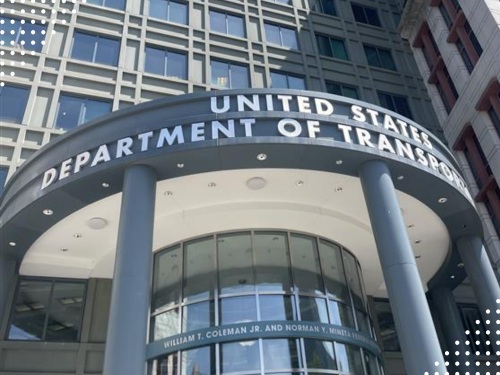The U.S. Department of Transportation recently unveiled new “interim final guidance” for the National Electric Vehicle Infrastructure or NEVI formula program to help speed up the construction of EV charging stations across the country.
[Above photo by AASHTO]
“If Congress is requiring the federal government to support charging stations, let’s cut the waste and do it right,” said USDOT Secretary Sean Duffy in a statement. “Our revised NEVI guidance slashes red tape and makes it easier for states to efficiently build out this infrastructure.”

He noted that this interim final guidance is effective immediately while the Federal Highway Administration seeks feedback on what further changes may be appropriate.
USDOT said the changes to the NEVI program – originally established more than three years ago by the Infrastructure Investment and Jobs Act – seek to help states speed up the deployment of EV charging infrastructure. According to USDOT, those changes include:
- Minimizing the content in state plans to statutory and regulatory requirements.
- Simplifying the state plan approval process.
- Aligning community engagement with regulatory requirements and reducing consultation requirements to advance projects.
- Providing states with flexibility to determine the appropriate distance between stations along alternative fuel corridors to allow for reasonable travel.
- Minimizing requirements for states to consider electric grid integration and renewable energy.
- Accelerating project delivery by encouraging selection of charging locations where station owners are also the site host.
- Eliminating requirements for states to address consumer protections, emergency evacuation plans, environmental siting, resilience and terrain considerations.
- Providing states with more flexibility to determine when their system is built out allowing NEVI funds to be used on public roads statewide.
The new NEVI guidance also rescinds previous requirements that were not specified in the law that EV charging sites be developed with at least 40 percent of the benefits directed towards disadvantaged communities; that they must demonstrate how building such sites promotes opportunities for the participation of small businesses, including minority-owned and women-owned small businesses; and that they describe “resilience strategies” for operation during emergencies and extreme weather.
 Top Stories
Top Stories
Modal Administrators Speak at AASHTO Annual Meeting
December 5, 2025 Top Stories
Top Stories

